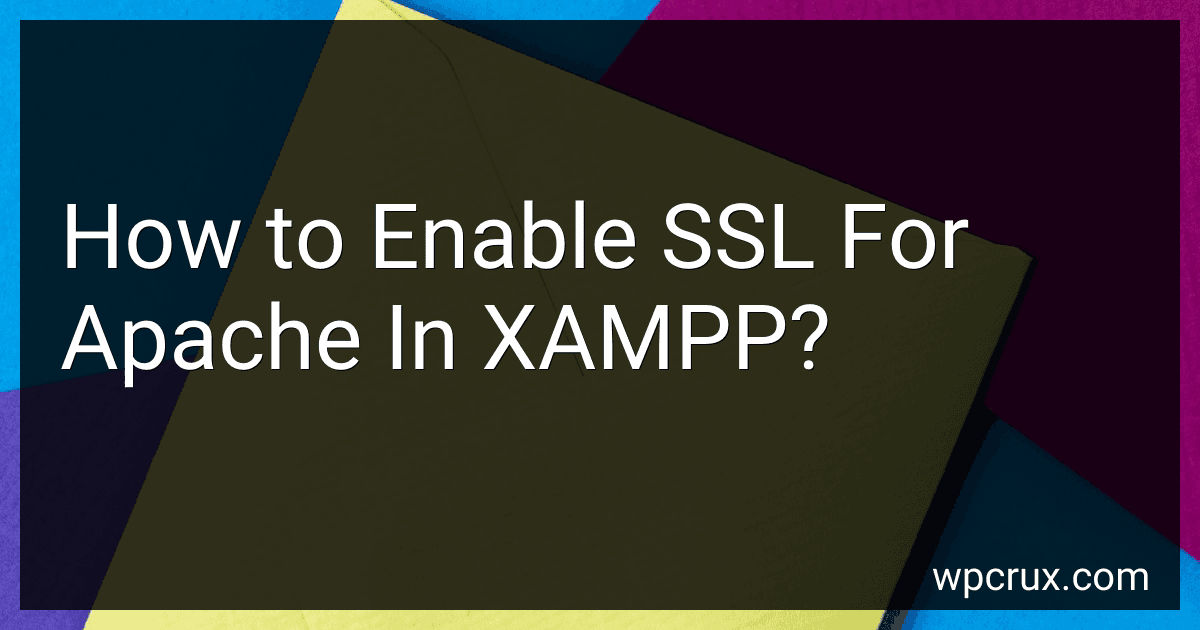Best SSL Certificates to Buy in October 2025

SSL/TLS Under Lock and Key: A Guide to Understanding SSL/TLS Cryptography


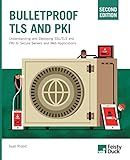
Bulletproof TLS and PKI, Second Edition: Understanding and Deploying SSL/TLS and PKI to Secure Servers and Web Applications


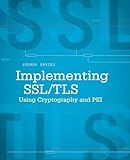
Implementing SSL / TLS Using Cryptography and PKI



FREE SSL CERTIFICATES: Secure your Web server with free Let's Encrypt Certificates Guide to fully automate the process of creating and renewing certificates. (CTS SOLUTIONS IT-PRO E-Books Book 4)



SSL server certificate creation manual for CentOS 8/7 (Japanese Edition)



Mastering NGINX Second Edition



My own Certificate Authority: Create your own graphical CA for Intranets with Open Source Software for Windows, Linux and MAC (CTS SOLUTIONS IT-PRO E-Books Book 1)



Secure Your WordPress Website with HTTPS for free: A Visual Step-by-Step Guide to Securing Your Website with SSL (Webmaster Series)


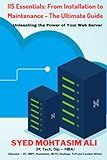
IIS Essentials: From Installation to Maintenance - The Ultimate Guide: Unleashing the Power of Your Web Server


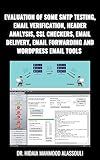
Evaluation of Some SMTP Testing, Email Verification, Header Analysis, SSL Checkers, Email Delivery, Email Forwarding and WordPress Email Tools


To enable SSL for Apache in XAMPP, you need to follow these steps:
- First, make sure you have XAMPP installed on your computer. XAMPP is a software package that includes Apache, MySQL, and PHP.
- Locate the Apache configuration file. In XAMPP, this file is typically located at "C:\xampp\apache\conf\httpd.conf". You can open this file using a text editor like Notepad.
- Search for the line that contains "LoadModule ssl_module modules/mod_ssl.so". By default, this line is usually commented out with a "#" symbol at the beginning. Remove the "#" symbol to uncomment the line and enable the SSL module.
- Save the changes made to the configuration file and close it.
- Navigate to the "C:\xampp\apache\conf\extra" directory and look for the "httpd-ssl.conf" file. Open this file in a text editor.
- Inside the "httpd-ssl.conf" file, search for the "Listen 443" directive. Make sure this line is not commented out with a "#" symbol. This directive instructs Apache to listen on port 443 for HTTPS requests.
- Next, find the "SSLCertificateFile" directive and specify the path to your SSL certificate file. This file should be in PEM format. You can generate a self-signed certificate or use a certificate issued by a trusted Certificate Authority (CA).
- Similarly, locate the "SSLCertificateKeyFile" directive and specify the path to your private key file. This file should be in PEM format and correspond to the SSL certificate specified in the previous step.
- Optionally, you can set other SSL-related configurations such as "SSLCertificateChainFile" for including the certificate chain, and "SSLEngine" to enable SSL encryption for virtual hosts.
- Save the changes made to the "httpd-ssl.conf" file and close it.
- Start or restart the Apache server in XAMPP. You can usually do this from the XAMPP control panel by clicking the "Start" or "Restart" button next to Apache.
- Once Apache is running, open a web browser and type "https://localhost" in the address bar. If everything is configured correctly, you should see a secure connection established with a valid SSL certificate.
That's it! You have successfully enabled SSL for Apache in XAMPP. Now you can develop and test websites using HTTPS on your local server.
How to enable SSL for virtual hosts in XAMPP?
To enable SSL for virtual hosts in XAMPP, follow these steps:
- Install the OpenSSL module in XAMPP: Open the XAMPP Control Panel. Click on "Config" next to Apache. Select "Apache (httpd-ssl.conf)" to open the SSL configuration file. Uncomment the line LoadModule ssl_module modules/mod_ssl.so by removing the "#" at the beginning. Save the changes and close the file.
- Generate a self-signed SSL certificate: Open the XAMPP Control Panel and click on "Shell" to open the command line. Run the following command to navigate to the OpenSSL directory: cd \xampp\apache\bin Generate the self-signed SSL certificate by running the following command: openssl genrsa -out localhost.key 2048 openssl req -new -key localhost.key -out localhost.csr openssl x509 -req -days 3650 -in localhost.csr -signkey localhost.key -out localhost.crt Move the generated certificate files by running the following command: move localhost.crt ..\..\conf\ssl.crt\localhost.crt move localhost.csr ..\..\conf\ssl.csr\localhost.csr move localhost.key ..\..\conf\ssl.key\localhost.key
- Configure virtual hosts with SSL: Open the XAMPP Control Panel and click on "Config" next to Apache. Select "Apache (httpd-vhosts.conf)" to open the virtual hosts configuration file. Add the SSL configuration for your virtual host by modifying the block. Here's an example: DocumentRoot "C:/xampp/htdocs/myproject" ServerName myproject.local SSLEngine on SSLCertificateFile conf/ssl.crt/localhost.crt SSLCertificateKeyFile conf/ssl.key/localhost.key Save the changes and close the file.
- Update the hosts file: Open a text editor with administrators' privileges (e.g., Notepad as an administrator). Open the hosts file located at C:\Windows\System32\drivers\etc\hosts. Add a line to map your domain name to the localhost IP (127.0.0.1). For example: 127.0.0.1 myproject.local Save the changes and close the file.
- Restart Apache in the XAMPP Control Panel to apply the changes.
Now, you should be able to access your virtual host using SSL by entering the domain name (e.g., https://myproject.local) in your browser. Note that since you are using a self-signed certificate, your browser may display a security warning.
How to set up SSLCertificateKeyFile in XAMPP for Apache?
To set up the SSLCertificateKeyFile in XAMPP for Apache, you can follow these steps:
- Generate a self-signed SSL certificate or obtain a valid SSL certificate from a trusted certificate authority (CA). You should have two files: the SSL certificate file and the private key file.
- Copy the SSL certificate file (.crt or .pem) and the private key file (.key) to a directory accessible by XAMPP.
- Open the Apache configuration file (httpd.conf) located in the xampp\apache\conf directory.
- Search for the SSLCertificateFile directive in the file. Uncomment the line and set the value to the full path of your SSL certificate file. For example:
SSLCertificateFile "C:/xampp/ssl/server.crt"
- Search for the SSLCertificateKeyFile directive in the file. Uncomment the line and set the value to the full path of your private key file. For example:
SSLCertificateKeyFile "C:/xampp/ssl/server.key"
- Save the configuration file and exit the text editor.
- Restart the Apache server in XAMPP to apply the changes.
Now, your SSL certificate and private key will be properly configured in Apache using XAMPP.
What is the difference between SSL and TLS protocols?
The main difference between SSL (Secure Sockets Layer) and TLS (Transport Layer Security) protocols lies in their versions and evolution.
- Version Differences: SSL is an older protocol that came into existence in the 1990s, with versions ranging from SSL 1.0 to SSL 3.0. TLS is an extension of SSL and was introduced later to address the security flaws and vulnerabilities found in SSL. The versions of TLS include TLS 1.0, TLS 1.1, TLS 1.2, and the latest TLS 1.3.
- Security Enhancements: TLS was developed to enhance the security provided by SSL. It includes improvements such as stronger encryption algorithms, more secure key exchanges, and more robust cryptographic hash functions. TLS 1.3, the latest version, provides significant security enhancements compared to previous versions.
- Cryptographic Algorithms: While both SSL and TLS protocols use similar cryptographic algorithms, the choices and preferences have changed over time. TLS has deprecated several weak algorithms used in SSL, promoting more secure options.
- Native Support: Modern web browsers and applications mostly offer native support for TLS, whereas support for SSL is being phased out due to security concerns. For example, major web browsers have started to display warnings or block access to websites using older SSL versions.
- Protocol Operation: In terms of protocol operation, there are subtle differences between SSL and TLS, mostly due to version variations. However, at a higher level, both SSL and TLS serve the same purpose of encrypting the communication between client and server, ensuring secure data transmission.
Given the enhancements and the deprecation of older SSL versions, it is generally recommended to use TLS instead of SSL to ensure the highest level of security and compatibility.
What is the SSLSessionCacheTimeout directive in Apache?
The SSLSessionCacheTimeout directive is a configuration directive in Apache that determines the duration for which SSL session information is cached. SSL sessions are established when a user connects to a secure website using the HTTPS protocol.
When a client establishes an SSL session with a server, the server generates a unique session identifier and stores relevant session information in a cache. This allows the server to resume the session for subsequent requests from the same client, without having to perform a full SSL handshake again.
The SSLSessionCacheTimeout directive specifies the time period for which SSL session information remains in the cache. After this duration, the session information is removed from the cache. It helps control the size of the cache and ensures that old or unused session information is cleared out to free up resources.
The default value for SSLSessionCacheTimeout is 300 seconds (5 minutes), but it can be adjusted as per the server's requirements. Increasing the timeout value can improve performance by reducing the number of SSL handshakes, while decreasing it can conserve server resources at the expense of more frequent handshakes.
How to configure SSLCertificateChainFile in XAMPP?
To configure SSLCertificateChainFile in XAMPP, you need to follow these steps:
- Locate the Apache server configuration file "httpd.conf". This file is typically located in the "conf" directory within the XAMPP installation directory.
- Open "httpd.conf" in a text editor.
- Search for the line that starts with "SSLCertificateFile" which specifies the path to the SSL certificate file. Below this line, add a new line starting with "SSLCertificateChainFile" to specify the path to the SSL certificate chain file.
For example:
SSLCertificateFile "path/to/ssl_certificate.crt" SSLCertificateChainFile "path/to/ssl_certificate_chain.crt"
Make sure to replace "path/to/ssl_certificate.crt" with the actual file path to your SSL certificate file, and "path/to/ssl_certificate_chain.crt" with the file path to your SSL certificate chain file.
- Save the changes to "httpd.conf" and close the text editor.
- Restart the Apache server in XAMPP for the changes to take effect. You can do this by opening the XAMPP Control Panel, stopping and starting the Apache service.
After configuring SSLCertificateChainFile, Apache will use the specified certificate chain file when serving SSL/TLS connections.
